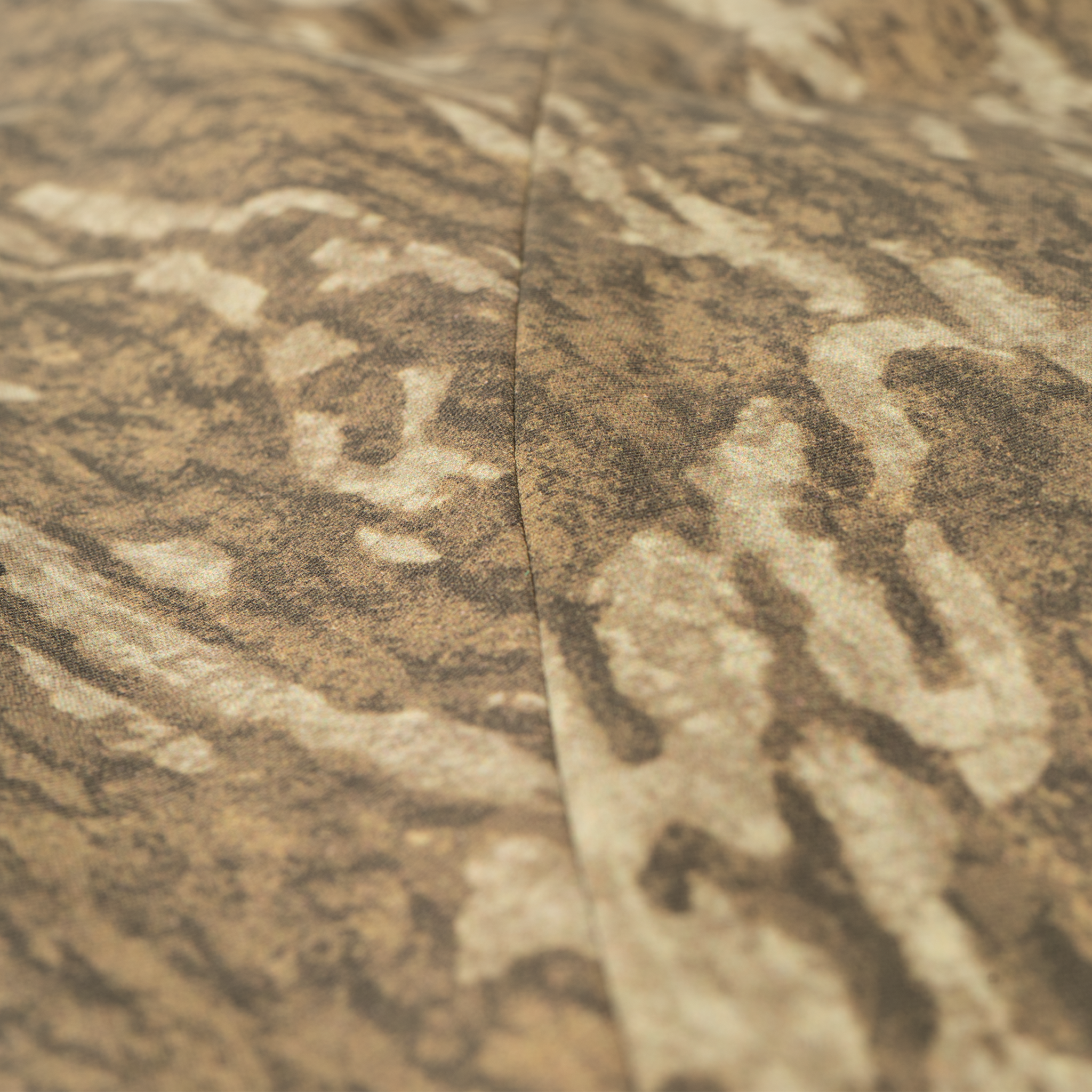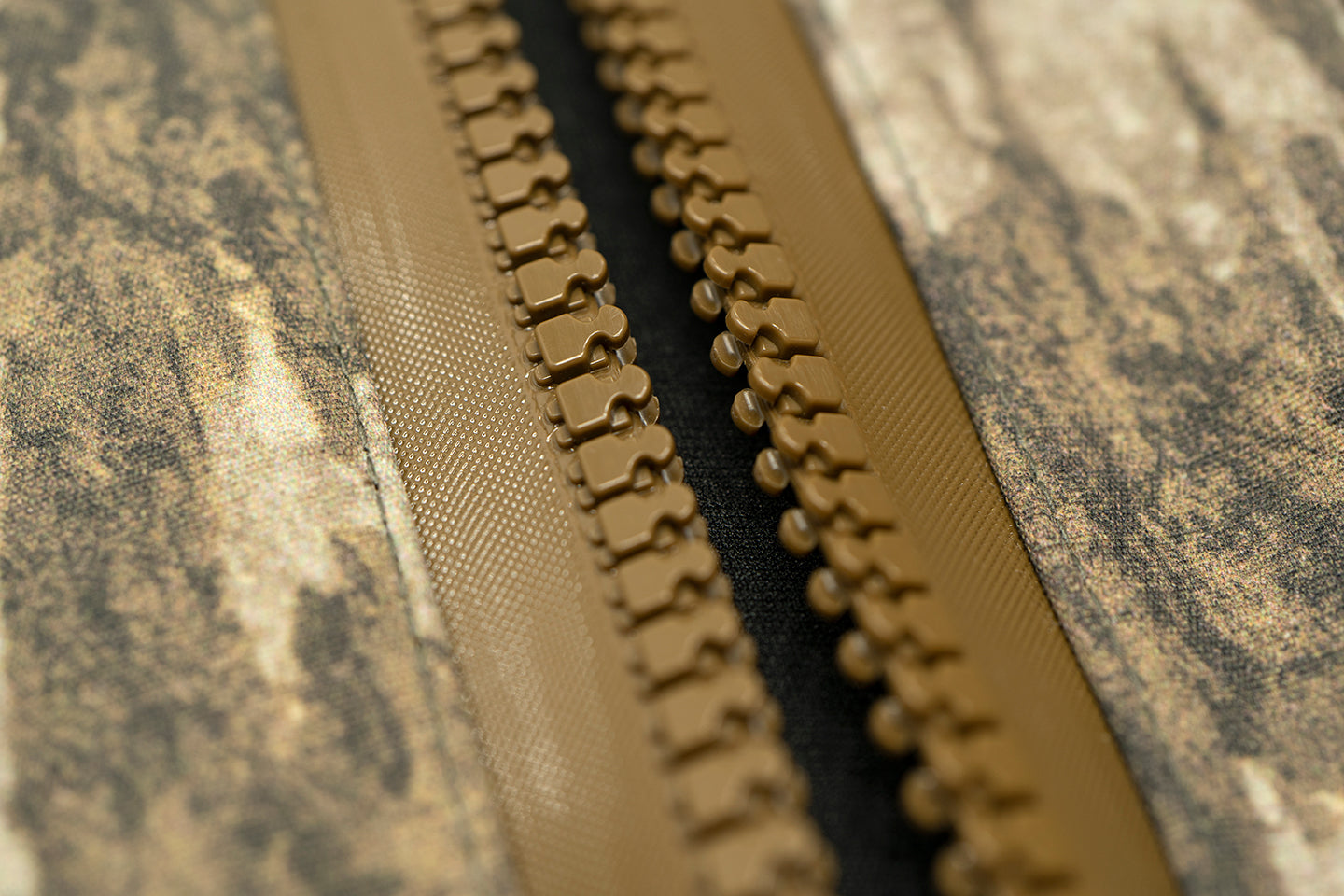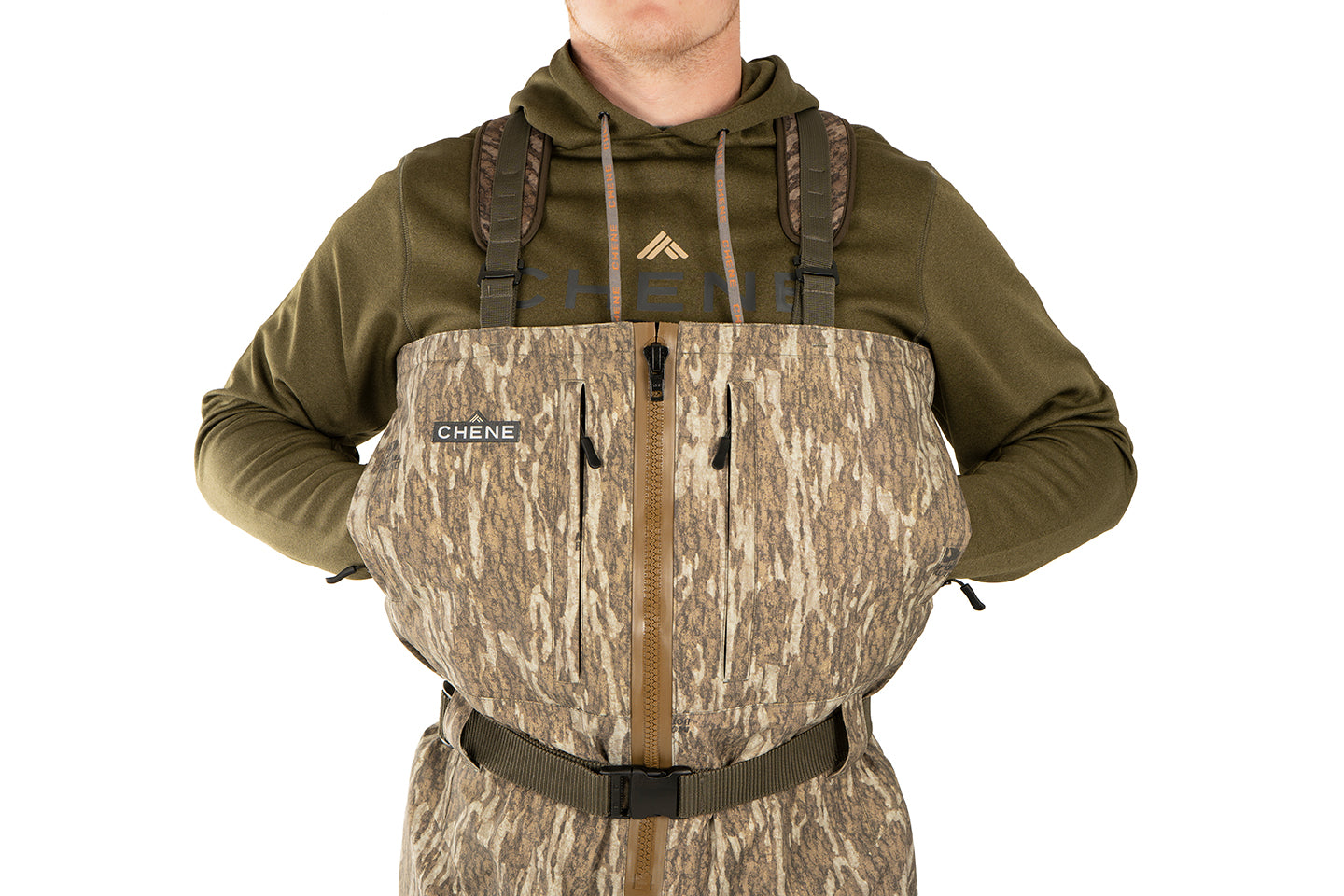
Materials and Seams
By now, you have inevitably heard the buzz about Chêne Gear waders. Our social media platforms have been inundated with messages, and we are optimistic about the excitement we are hearing from the waterfowl community. It’s apparent from your messages that you are eager for a high-quality wader from a brand that’s willing to stand behind their product with a substantial and significant warranty.
One of the main questions we get has been “what makes your waders different?”. In our previous blogs, we’ve begun answering that question systematically - examining the details of critical components like zippers, pockets, shoulder straps, boots, and boot covers. We have intentionally made you wait for a detailed explanation of what we believe to be the two most substantial differentiating factors about the Chêne Gear waders. But the time has come for us to divulge the secrets that make our waders #BuiltBetter. There are two substantial differences that set Chêne Gear waders apart, and in the paragraphs that follow we’re going to give you all the details.
MATERIALS
Chêne Gear waders are built out of nylon. Our nylon fabric is the highest quality, premium waterproof 4-layer nylon fabric available in the world. Nylon is a big deal. Virtually all of the breathable hunting waders on the market today are built out of a 3-layer polyester fabric. Nylon is better than polyester. It’s not bullet proof and there are certainly ways to make nylon fail, but the simple fact remains that nylon waders are significantly superior to polyester waders. Nylon is far more abrasion resistant, has significantly greater tensile strength, and offers a level of long-term durability that polyester lacks.

Breathable waders are commonly built out of polyester because the manufacturing process is easier and less expensive than building them out of nylon. This is primarily because of the way the camouflage pattern is applied to the polyester fabric through heat transfer. While this heat transfer is very cost effective, it damages the integrity of the fibers in the polyester fabric - the very fibers that need to be waterproof and durable in order to keep you dry.
The polyester material is then sewn together with a needle and thread at a rate of 11 stitches per inch. So before a polyester breathable hunting wader is put in the box and shipped to you, the integrity of the fabric has been damaged by the heat transfer process and then additionally weakened by thousands of tiny needle holes along all of the seam closures. A narrow strip of seam tape is then applied to the back of the seam closure to create a waterproof seal. It’s no wonder that breathable waders are prone to seam leaks and lack long term durability, because a tremendous amount of trust is being placed on a narrow strip of internal seam tape.
When we set out to build a better pair of waders, we recognized the significant issues created by the current manufacturing process and vowed to uphold our commitment to #BuiltBetter. That’s why we chose nylon.
Although very expensive and slow, nylon presented us with the opportunity to digitally print our camouflage. The benefit to digital printing is that it is a cold process that does not damage the integrity of the nylon fibers. Digital printing is not only better for the integrity of the material, it also looks better. You’ll notice that our material has the natural, soft appearance of cotton without the synthetic gloss common on polyester garments.
Superior material combined with a superior printing technique means our customers get waders that are truly #BuiltBetter.
SEAM CLOSURE
Breathable waders have traditionally been built by sewing together multiple pieces of waterproof material using a needle and thread. These stitching methods literally require the manufacturer to puncture thousands of tiny holes (11 per inch) in an otherwise waterproof material to create the seam closure. The seam is then sealed on the inside of the wader by applying tape that waterproofs the holes left from the stitches. When you begin counting needle holes, it’s no surprise to find that the most common point of failure for breathable waders is in the leg seams. These critical seam areas are the parts of the wader that remain submerged the longest and that incur the most friction as you move. We wanted to eliminate seam leaks, because the true litmus test for a pair of waders is whether or not they leak.

The use of nylon fabric makes it possible for us to create stitch-less seams in the critical leg areas below your crotch. The scientific term our lawyers told us to use for this stitch-less process is “mechanical bonding”. We begged them to let us call it "'magic" but they refused. Most of the folks that wore our waders this past winter noticed that our seams are so flat, so flush, and so dry that it’s almost like they aren’t there at all. When the nylon fabric is mechanically bonded together it forms a waterproof seal. The seam tape that is applied behind those seams then serves as a secondary additional sealant. Whereas the seam tape is the only waterproof sealant for traditionally stitched seams, our seam tape below the belt is actually just serving as a back-up to the "magic" mechanically bonded seams down the legs. It’s amazing what eliminating thousands of tiny holes in the pant legs does to the long-term water-proofness and durability of a pair waders.
In addition to eliminating stitched seams below the belt in the legs, we also re-positioned the placement of those seams. We moved them to the front and back of the legs to eliminate the damage caused by your legs rubbing together while you are walking.

Mechanically bonded seams below the belt work better than traditional stitching, but the opposite is true above the belt. You will find that the primary zipper in the center of the wader chest, the upper chest pockets, and the nylon shoulder straps are stitched. Stitching in these areas provides significant structural support to parts of the wader that need to carry weight and are rarely underwater.
CONCLUSION
Our commitment to #BuiltBetter means that we are committed to delivering you the best product possible. When the dust settles, we know that the duck hunting community will evaluate the waders we are building by how they perform in the field. We are duck hunters too. We want waders that are #BuiltBetter and improve our own hunting experience just like we know you want waders that will improve your own hunting experience. That’s why we are equally committed to building a better brand and a better customer service experience. We know what it feels like to need help servicing your waders and not be able to get it. We know the frustration of spending your hard-earned money on waders that leak and that cannot be fixed. That’s why we built Chêne Gear.
We cannot guarantee you that our waders will forever be fail proof, because all products eventually fail in some way. What we can guarantee you is that if your Chêne Gear waders fail, we will be there to answer the phone and help you out. We are building you a superior product, and a superior customer service experience. On July 14th, we hope you’ll join the Chêne Gear family and give us the opportunity to show you what #BuiltBetter is all about.



